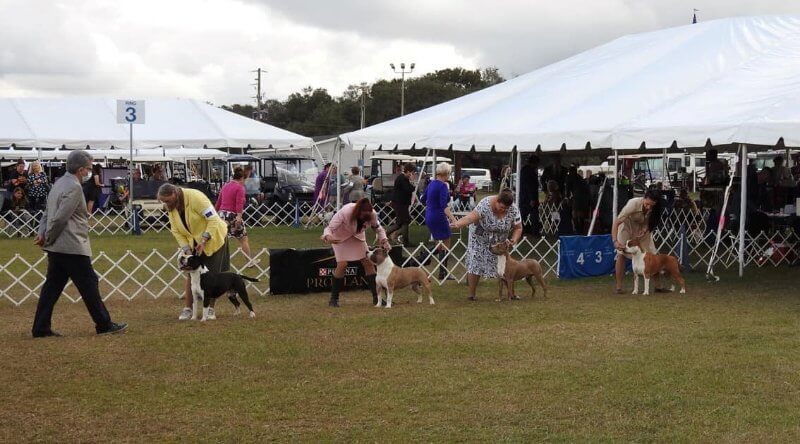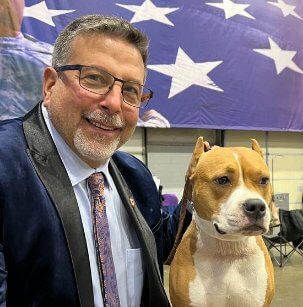
Home » In Pursuit of a Better Process – Should the AKC Allow Judges to Sit Ringside to Observe Group Judging?

Given my background in psychology and philosophy, I find myself assessing systems and practices in an attempt to discover whether our practices correspond with the science that should advise our reality. Whether I am examining the political system, educational system, or in this case, conformation dog shows, there is science that does speak to whether our systems follow rational guidelines and support the best possible outcomes. Unfortunately, the tools of assessment are not readily available to most of the mainstream society, as they require a specific educational background that is usually relegated to research psychologists, philosophers, and economists.
I describe the world of conformation dog shows as a “culture,” since it has its own unique norms that shape the manner in which shows are structured, shaping everything from preparation, ring process, acceptable behaviors, point tabulation, etc. Dog show culture, like any culture, embraces policies or processes that do not necessarily support the best interests of its constituents. Left unchecked, we accept these as a cultural norm and we relegate them to, “that’s the way it is,” regardless of whether it makes sense or not.
One area that I feel requires discussion is whether judges should watch Group judging or Breed judging on weekends when they will, at some point, judge some of the same dogs. When I posted an opinion poll on this topic on Facebook, I received a great deal of push-back from judges, with the majority stating that “they make their own decisions, and it doesn’t matter if they watch other judges.”
While I believe that these individuals are being completely sincere, believing that they are unaffected by the decisions of others is a misconception, as there is a great deal of science which states that this is not the case. Decision-making theorists have proven that there are “unconscious biases” that affect the decisions we make, whether we are grocery shopping or judging a dog show. My desire in writing this article is not to change the culture of the dog show world, but to educate its participants about the manner in which biased decision-making alters the landscape of our competitions.
Dog show culture, like any culture, embraces policies or processes that do not necessarily support the best interests of its constituents.
In discussing decision-making, we need to first embrace the tenet that human beings are a social species of animal. In our evolution, our minds have developed social algorithms or programs that keep us aligned, for the most part, with our social group. These programs promote a sense of unity and harmony within the group; given that harmony provides more rewards than disharmony or anarchy. Stemming from this desire for order is a concept referred to as “Groupthink.” While, to some, this sounds like an Orwellian concept from his novel 1984, it is “a phenomenon that occurs when a group of individuals reaches a consensus without critical reasoning or evaluation of the consequences or alternatives. Groupthink is based on a common desire not to upset the balance of a group of people.”
If you pay close attention to Group judging over the course of a string of dog shows, you will notice that it is often the same dogs placing in their respective Groups, day in and day out. It is rare to see a great deal of variation over the course of a cluster. While certain judges might have an appreciation for a specific breed and reward that dog, often, the usual suspects will receive placements. During a recent weekend, for example, a top-winning dog that has not walked out of the Group ring without a placement since January walked out with nothing. There was a synchronized gasp from the crowd as the dog walked. Apparently, the judges “breaking from the norm” created discomfort within the community.
Consider that the judges who are judging on any given weekend are sitting ringside, watching the other judges make their decisions about a similar group of dogs. If we are seeing a great deal of repetition in the dogs that are placing, are we really willing to accept that those are always the best dogs in the ring, or is it likely that we are seeing how groupthink can affect critical reasoning in what is meant to be an objective, individual enterprise?
If you pay close attention to Group judging over the course of a string of dog shows, you will notice that it is often the same dogs placing in their respective Groups, day in and day out.
Compounding the effects of groupthink is another decision-making principal called “Cognitive Ease.” Cognitive ease is an unconscious bias that occurs due to our general discomfort in using our upper cortical region of our brain, the area responsible for doing the mental “heavy lifting,” when we need to do complex mathematical or other types of formulaic thinking. Looking at a group of twenty Best of Breed winners, and trying to decide which four dogs are worthy of a Group placement, can cause mental strain. The act alone of trying to hold data in your active memory as you are distracted by trying to assess other dogs is an extremely challenging task.
The pervasive effects of cognitive ease are found throughout our daily lives, as we often avoid tasks that are stressful due to having to apply our intellectual resources to complete the task. Going back to the concept of groupthink: If a judge knows that a fellow judge had chosen a specific group of four dogs the day before, why not copy some of those same choices? In doing so, the judges keep some harmony in the community without having to do the heavy mental lifting.
If I have challenged some of your notions about the ability of judges to be objective about their decisions, it is probably for the best. If we ignore science, in any forum, we perpetuate faulty policies that are not in the best interest of the “culture.” Keep in mind, my purpose in writing this article is not to point out inherent wrongdoing that shapes our results, but instead, to explain that, regardless of how hard we try to be objective, our unconscious programming at some point takes over.
I hope that I have provided my readers with some “food for thought.” You may recall that I had mentioned that I did a Facebook poll on this topic and roughly seventy percent of the people who participated felt that judges should not be watching the Group competitions on weekends when they are judging the same dogs. I did receive some push-back from a few judges and exhibitors, which I’d expected, as when we challenge a cultural norm there is always a percentage of the population that will object. I do believe that keeping an open forum for discussion is the only way that we can move forward effectively, making the culture of conformation dog shows the best for all involved.
I encourage you to join my dedicated Facebook page, where you can find my articles on the psychology of dog shows and participate in discussions where we can all learn from each other about our thoughts, ideas, and experiences. See you in the ring!
